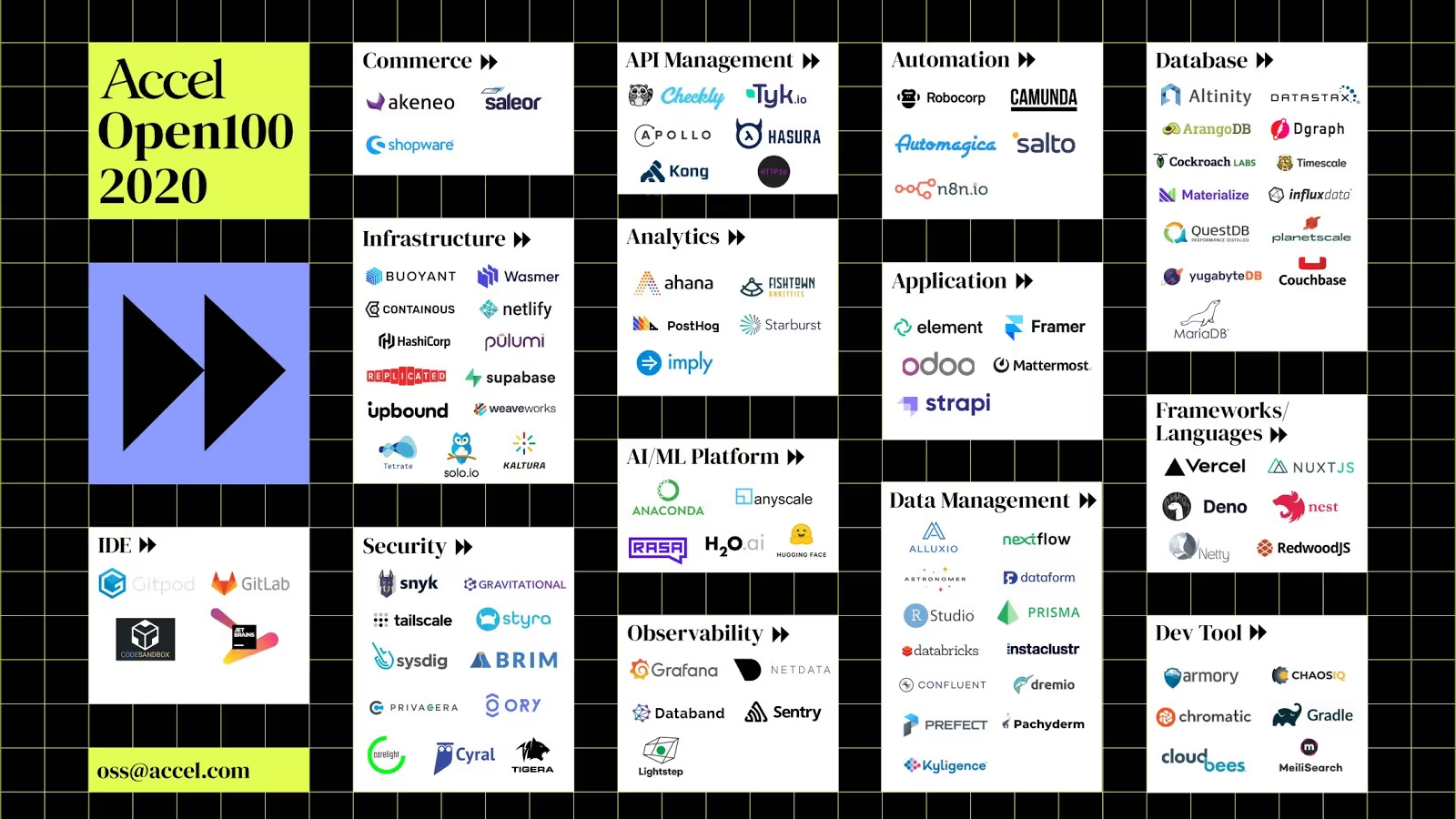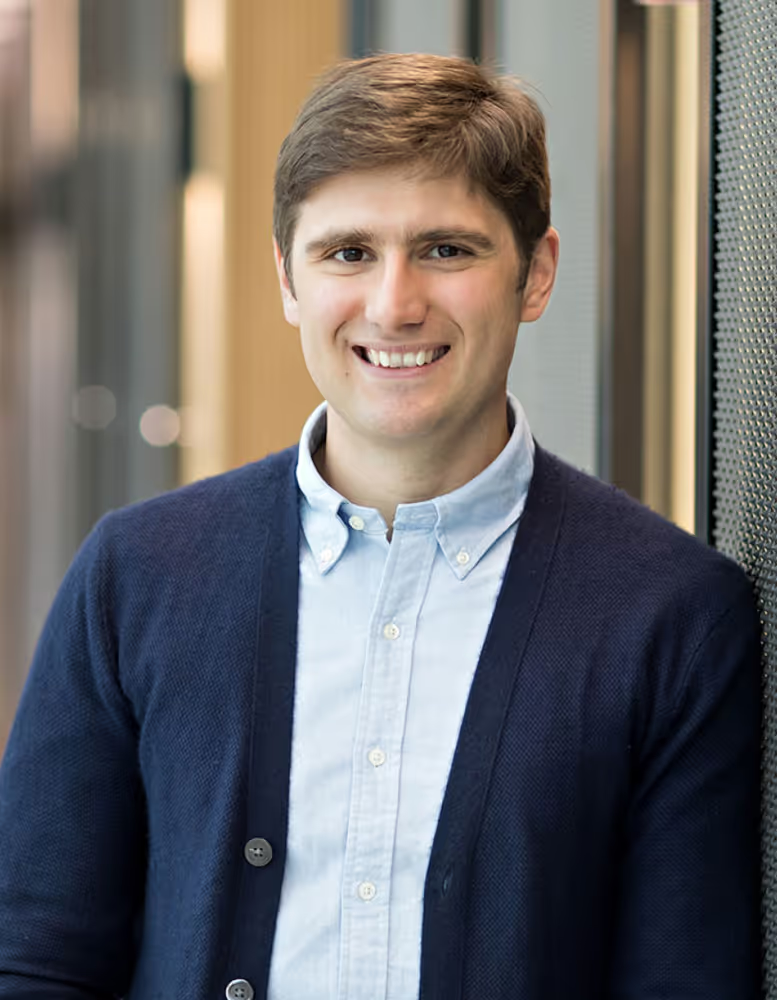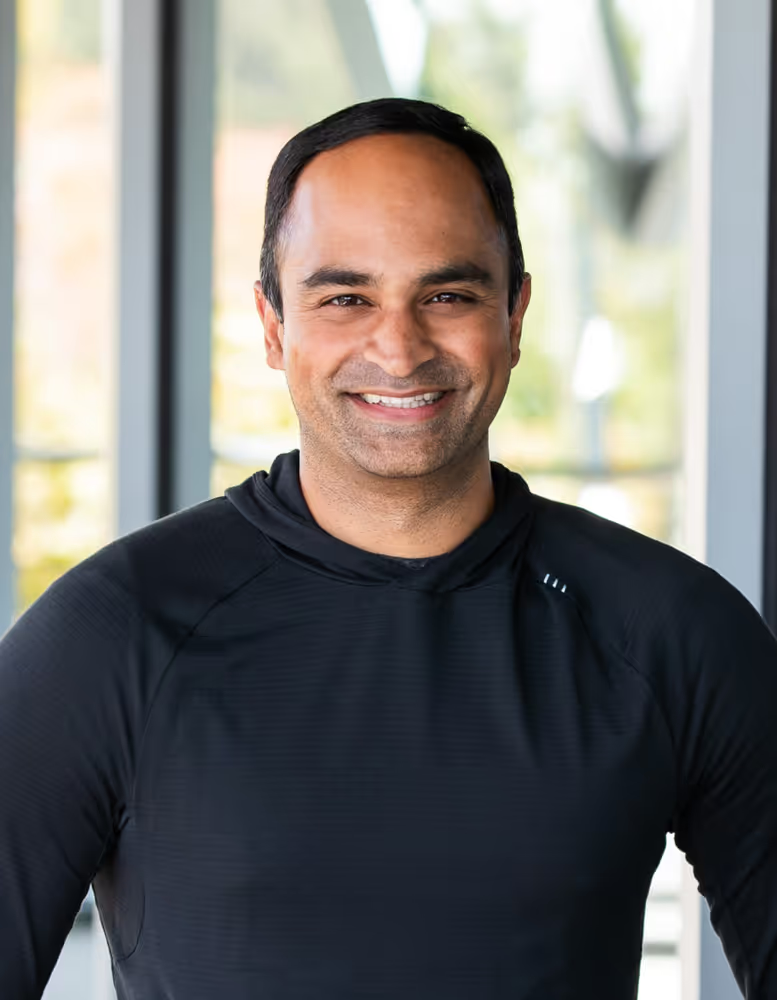The Future of Open Source: Launching the Open100

Open Source leaders share their insights and key tips
The last few years have marked a coming-of-age for open source software (OSS), as the attitude of proprietary software vendors has shifted, major IPOs and acquisitions have underscored commercial potential and developer communities have continued to expand well beyond traditional tech hubs.
Not long ago, it was highly contrarian to believe that a multi-billion dollar company could be built with open source at its core. Following the acquisitions of Red Hat and GitHub, IPOs of Elastic, Cloudera, and MongoDB, and large funding rounds of many more open source-based companies, though, that has changed decisively. These economic events reflect surging grassroots activity: in 2019 alone, over 1.3 million first-time contributors joined the open source community and 30% of all projects on GitHub were created.
As we have written previously, the growth of these companies reflects multiple factors driving enterprise adoption of OSS – most notably, advantages relating to Cost, Community and Control. The growing influence and status of developers mean that most enterprises now acknowledge the necessity of having an open source offering and strategy.
As OSS has grown in recognition and credibility, it has also expanded its footprint within organizations and moved up the IT stack. From its origins in infrastructure and database solutions, mainstream OSS now spans everything from API management to enterprise automation, commerce, collaboration, CMS and design.
What has resulted is a Cambrian explosion of OSS start-ups all across the application stack. As a long-term investor in this space, Accel decided to map its progress through the creation of the Open100, a collection of the fastest-growing start-ups of significance in open source, measured by community growth, commercial evolution, and innovative approaches to driving OSS adoption in new markets.
Ranging from the most prominent companies to those that are bringing open source into new verticals, the Open100 reflects both the volume and breadth of start-ups commercializing the growing open source movement.

The #Open100
We recently previewed the Open100 at Open Source Connect, a virtual event on Hopin that brought together founders and experts to debate the past, present, and future of OSS. In discussion with leaders from oss@accel.com, Rasa, Confluent, Sentry, Segment, and Vercel, we explored some of the distinct business-building challenges of open source – the tension between commercialization and community building, the specific demands of sales and marketing, and the need to nurture a community without being controlled by it.
You can re-watch our panels, Commercializing & Scaling, Community & Licensing & Open Source: Past, Present & Future from which some key insights and lessons emerged:
Treat projects like products
Sentry Founder and CTO David Cramer, who initially created the project to solve problems while working at Disqus, advises OSS developers to work where possible with company backing.
“All open source should probably be started within a company,” he says, “because then there’s value behind it, rather than it being purely academic.I was at Disqus iterating what became Sentry in my spare time for over three years – it really gives you the ability to polish a project and mature it by working like a product manager, both with your internal customers and the external community.”
Calvin French-Owen, Co-founder and CTO of Segment, agreed, adding, “sometimes people will start something because they think it’s an interesting science project. That’s very different from starting something because you actually want to use it.”
This focused approach reflects the greater professionalization of open source as developer and project numbers have grown rapidly in recent years.
“Open source has changed tremendously by what people now see as the minimum acceptable level of care for a project,” says Sentry’s Director of Engineering, Armin Ronacher. “It used to be very common that there was just some source code on an FTP server, but now you need to have the source code on GitHub, a ReadMe license, it has to have CI set up, there has to be a code of conduct and a way to get feedback.”
The same is true of marketing. Vercel CEO Guillermo Rauch highlights that the company works hard to ensure parity between its open source and enterprise offerings. “It’s extremely important that we have the same caliber of marketing documentation and support for Next.js as our platform product. We give the same care we would give to any product launch when we announce a new feature or communicate our roadmap – with the transparency you would expect to see from an open source project.”
Balance community and commercialization
For most OSS start-ups, there was a community long before there was a company. “Community is critical, especially when you’re thinking about building an audience early-days,” argues GC Lionetti, CMO of Confluent. “Confluent’s journey started almost five years before we were an actual company. If you think about that ethos and that background, it’s important to respect and harness that energy from the community, but also contribute back.”
In practice, that means ensuring there are people with direct responsibility for community management. “Make sure you have a voice in the company that really identifies with the community,” Lionetti advises, “because it keeps you honest and it keeps you true to the community you’ve built.”
Snyk takes a similar approach, says Co-founder and President Guy Podjarny: “We make sure there are people in the company who don’t care about commercialization. Their entire mindset is making the community thrive.”
As they continue to nurture the community that helped build them, OSS companies must manage the natural friction between doing what is best for users and the necessity of commercialization. “It’s a very real tension,” says Kasey Byrne, VP Marketing of Rasa. “As a Head of Marketing, I have two best friends: the Head of Sales and the Head of Developer Relations. And they don’t always like each other, which is just structurally true in a company like ours and a constant source of appropriate conversation.”
Think beyond sales and customers
This duality between users and customers means OSS companies must think broadly about commercialization and be willing to take indirect routes to a sale.
“The goal is co-creation, the goal isn’t necessarily the sale.The sale comes out of the co-creation.” - Kasey Byrne
Lionetti counsels that companies must acknowledge the unique nature of the open source user journey. “The mistake people make is to define the customer journey from when someone comes into the funnel from a monetization perspective,” he says. “In open source, that user has often already gone through a 6-12 month journey with you as a company, learning, and building. Don’t go to the last 15 minutes of the movie; pay attention to what came first.”
When developers are the typical customer, he suggests, sales needs to be sophisticated and multi-layered.
“You’re usually inclined to push people to the sales motion, but developers innately don’t want to talk to anybody; they’d rather read your docs and go down the learning path. Have more tools in your belt than just driving straight to monetization. Eventually, customers will end up there if you have the right product and the right learning path.”
Be willing to say no
Important as the community is to every OSS project or company, it cannot be allowed to dominate its direction.
“My take is that some of the best open source software comes down to saying no to the community,” says Calvin French-Owen. “It’s easy to let a small, focused project balloon and balloon in terms of features scope, unless whoever’s maintaining it provides a strong point of view.”Referencing the approach of the team behind Go, he points to the need for a disciplined response to community requests. “You need the kind of approach where you create the API, people can build whatever they want outside of the API, but when it comes to the core set of product features, you bring a strong point of view of what will deliver the best product,” he says
David Cramer also warns against trying to be all things to all developers. “Over time as Sentry grew and we became more successful, we took a decision to no longer support anything the community wanted; we would just support what we use. If you’re shipping a bad product, it’s not a good experience for anybody.”
Thanks to Armin, Calvin, David, GC, Guillermo, Guy, and Kasey for your time and insights.
You can view the full event slides here. Find us at oss@accel.com.
-- Accel Open Source team Andrei, Arun, Dan, Vas, Adrian, David, Varun and Christine.
Great companies aren't built alone.
Subscribe for tools, learnings, and updates from the Accel community.




%20(1).avif)